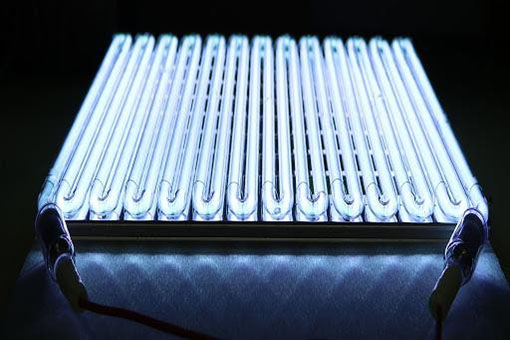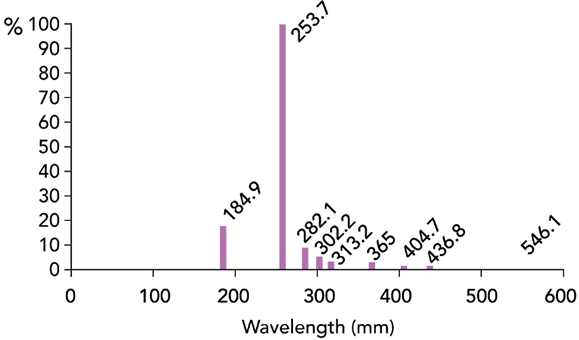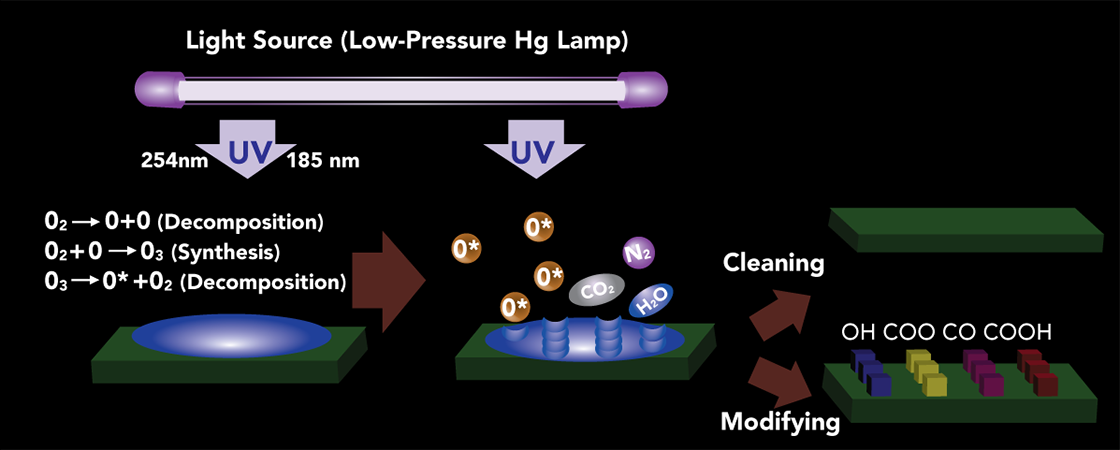
UV Radiation / Ozone
UV-O3 cleaning is generally effective for removing organic contaminants, though it may be ineffective for removing inorganic contaminants. Therefore, as preliminary cleaning, inorganic contaminants must be removed in advance using pure water, solvents, or the like before UV-O3cleaning is conducted.
Principle of UV-O3 Cleaning
The principle of UV-O3 cleaning is as follows: organic compounds are converted into volatile substances (e.g., water, carbon dioxide, nitrogen) by decomposition by ultraviolet rays and by strong oxidation during the formation and decomposition of O3 and are removed from the contaminated surface.
The major wavelengths of the ultraviolet rays radiated from a well-known low-pressure mercury vapor lamp are 184.9 nm and 253.7 nm. When atmospheric oxygen O2 is irradiated with ultraviolet rays with a wavelength of 184.9 nm, the oxygen absorbs the ultraviolet rays to form O3 by the following reaction:
Ultraviolet rays with a wavelength of 189.4 nm Ozone O3 irradiated with ultraviolet rays with a wavelength of 253.7 nm absorbs the ultraviolet light to decompose O3. During the process of formation or decomposition of O3, atomic oxygen O having a strong oxidizing ability is generated.
Contaminants Removable by UV-O3 Cleaning
- Cutting oils
- Mixtures of beeswax and pine resin
- Lapping agents
- Vacuum-pump oils
- Silicon diffusion-pump oils
- Silicon vacuum greases
- Soldering fluxes
- Human sebum
- Contaminants adsorbed during long-term air exposure
- Carbon thin films formed by vacuum evaporation





